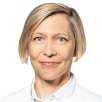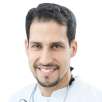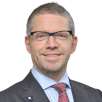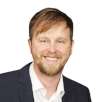During this year’s Dentsply Sirona World 2019 meeting, which took place on Oct. 3–5 in Las Vegas, Dental Tribune Italy had the opportunity to meet with Dr. Terri Dolan, Chief Clinical Officer at Dentsply Sirona, to talk about the importance of education in dentistry, one of the main focus areas of the company. In 2018 alone, Dentsply Sirona offered 11,835 courses worldwide, in which nearly 432,000 dental professionals from around the globe participated.
Dr. Dolan, could you please explain why Dentsply Sirona is heavily investing in dental education programs?
Part of our purpose and mission as a company is to empower dental professionals all over the world. One of the clearest ways that we can accomplish this is through training and education. We offer the most in-depth and wide-ranging clinical education programs in the industry. In recent years, we have continued to expand our courses and invest in opening new education centers around the globe to reach as many people in as many markets as possible. It is our firm belief that our success as a company depends on the success of our customers and the dental profession as a whole. Clinical education is part of that foundation upon which the industry moves forward, delivering better oral health care and ultimately improving the lives of patients.
Dentsply Sirona’s educational courses have drawn thousands of participants. What is the key to your success?
At Dentsply Sirona, our strategy is pretty simple—put the customer in the center of everything we do, offer innovative products and clinical solutions to our customers, and combine those efforts with educational experiences presented by the best clinicians and technicians. We work very hard to listen to our customers and the market, and we design products and services, including clinical education, with that principle in mind. Our courses offer a variety of teaching methods in order to meet the needs and skill levels of our learners and include live lectures, product training, self-instructional courses, webinars and hands-on training, in which the participants spend at least a third of the instructional time practicing skills. That variety means that there is something for everyone.
As a company, we are so fortunate to have strong relationships with universities and leading educators and scientists around the world in all dental disciplines. We are fortunate to be able to work with many of them in designing our curriculum, and they serve as lecturers and trainers in our clinical education programs. They are instrumental in designing courses that are locally relevant and cutting-edge. And we haven’t become complacent in our success. Our teams around the world continue to come up with creative ways to reach more dental professionals. For example, our team in Russia came up with the idea to bring a state-of-the-art mobile training center to smaller cities in remote regions of the country. Dental professionals working outside the region’s largest cities often have to travel significant distances to access training, so we brought it to them. Between April and November, our mobile training center makes 23 stops, covering 25,000 km.
In your opinion, what are the primary goals in the education of today and tomorrow?
Technology is changing rapidly. The overall goal is to move dentistry forward and equip as many dental professionals as possible with the knowledge and skills needed to advance their dental capabilities and allow them to offer the best possible care to their patients. As digital solutions become more common in the dental practice, we see our involvement in continuing education and training as a responsibility to help ensure that those technologies can be used to the fullest benefit for both practitioner and patient.
This year, many young doctors and students came to the Las Vegas meeting. Do you offer special courses for this audience?
Dentsply Sirona cares deeply about encouraging students to get involved in research. Since 1959, we have supported the global Student Competition for Advancing Dental Research and its Application (SCADA) Awards program. This year marked its 60th anniversary and it is inspiring to see how many students from different countries have participated in the competition throughout the years. SCADA also provides fellowship awards to financially support continued scholarship and graduate education.
Another great example of how we support the next generation of clinicians is our Global Clinical Case Contest, which has been taking place since 2004/2005. Undergraduate and graduate students of dentistry with less than two years of clinical practice experience are eligible to participate by documenting a patient case in esthetic dentistry. The program has grown significantly over the years, and in 2018/2019, we received more than 1,200 submissions from a total of 140 universities around the world. It’s exciting to see so much enthusiasm for research among the next generation of clinicians.
The number of women in the medical world is growing. What training programs are you offering for female dental professionals?
Dentsply Sirona is proud of several recent initiatives to support women dentists and technicians. In 2017, 12 female dentists from nine countries participated in the first intensive, weeklong Women in Dentistry program that focused on integrated solutions. The feedback from participants at that initial event was extremely positive, which encouraged us to develop additional programs focused on our women customers. The following year, Dentsply Sirona launched the first EPIC [Educate, Practice, Innovate and Connect] Women’s Dental Meeting in Charlotte, North Carolina, U.S., which is now held annually. The purpose of the meeting is to bring female practitioners from all over the U.S. together for two days of education centered on CEREC, networking and building a community of women CEREC users.
More recently, we launched the Smart Integration Award and Expert Development Program with the aim of honoring women in dentistry for their ideas in networking, digitalization and the integration of new technologies in order to optimize workflows at their treatment centers.
What are the difficulties and specifics, if any, for female dentists in the digital technology field?
That’s an interesting question. A group of women leaders within Dentsply Sirona recently researched this topic and came up with some interesting findings and recommendations. In fact, the Smart Integration Award and Expert Development Program grew from this research. We learned that some women would like support in developing their professional networks and would like to participate in training programs that help build the knowledge needed to open or grow a practice. This information was used when we designed the Expert Development Program.
We also learned that some women would prefer to learn in a women-centered environment, or would like to be taught by female clinicians. So, we are expanding our efforts to diversify the type of experts who engage in our clinical education program. We have also partnered with organizations such as the American Association for Women Dentists (AAWD) to gain insights into the educational needs of their membership. We recently hosted a webinar for AAWD members, titled “Making the Transition: Analog World Versus Digital World,” led by an amazing speaker, Dr. Lynne Thomas. She gave a great presentation about how she transformed her practice to routinely incorporate digital workflows, allowing her to achieve great esthetics and function for her patients.
Your company is increasingly focusing on prevention. Dentsply Sirona’s educational projects for dental hygienists are also growing. Could you please explain the rationale behind this?
Oral health is improving globally, largely thanks to healthy behaviors and improved access to dental services. Around the world, more people have greater access to preventive dentistry, and are retaining their natural teeth longer and in better condition. There is also a growing recognition by health professionals and consumers that oral health is essential to overall health and well-being. You can see our commitment to the topic of hygiene reflected at this year’s Dentsply Sirona World in Las Vegas. We offered a hygiene-specific track with sessions taught by renowned dentists and hygienists who used a holistic approach to the day-to-day needs of the dental hygiene profession.
Recently, a group of international clinicians launched the Slow Dentistry concept. Alongside new technologies, which are advancing at an accelerating speed, the pressure for staying on top of these developments is rising and more dental professionals seem to suffer from high levels of self-reported stress and burnout. What is your opinion of this?
As a manufacturer, we aim to support our customers, helping them to achieve their professional goals and provide the best possible care to their patients. Dentsply Sirona develops its solutions with the entire workflow in mind. One of the goals is to help practitioners make the most efficient use of their time in their practices.
We don’t want practitioners to suffer burnout or be overwhelmed by the challenges of day-to-day practice. Technology, when deployed in the right way, can simplify many tasks and processes in the dental practice. The adoption of digital solutions and their associated workflows can free the practitioner from time-consuming tasks and make dentistry more enjoyable for both the practitioner and the patient. Supported by clinical education, improvements in connectivity and the seamless integration of equipment help dental professionals take full advantage of the benefits of digital tools and workflows.
Do you agree that evolution in dentistry also needs to be supported through extraclinic learning, focusing on topics such as management, organization, human resources and leadership?
Absolutely. We organize courses into three categories—clinical excellence, technical excellence and practice excellence—with the goals of offering education and support in all aspects of dentistry and dental practice. While a commitment to technical and clinical excellence is essential, we realize that the dental team also needs education and support to successfully lead and manage a dental practice. Courses on topics such as communication, practice design and management, and teamwork are an important part of our educational portfolio.
At the recent European Association for Osseointegration (EAO) annual congress in Lisbon in Portugal, Dental Tribune International had the opportunity to ...
POST FALLS, Idaho, U.S.: Patients often neglect discussing sleeping issues with their dentist because they are not aware of the role that the dentist can ...
CHARLOTTE, N.C., US: As part of its commitment to bringing high-quality clinical education to dental professionals, Dentsply Sirona is expanding its DS ...
Prioritising clinical education, Dentsply Sirona, a global dental industry leader, continues its commitment to empowering dental professionals. In its ...
In September this year, DENTSPLY International and Sirona Dental Systems announced that they have entered into a definitive merger agreement, creating ...
CHARLOTTE, N.C., US: Dentsply Sirona is counting down to the annual Dentsply Sirona World (DS World), which will be held from 15 to 17 September at Caesars...
CHARLOTTE, N.C., US: To coincide with World Environment Day on 5 June, Dentsply Sirona is offering dental professionals who want to develop a more ...
Dr Mahfuz Rahman is a dentist and founder of Frisco Dental Studio in Texas in the US. He is also a dental photography enthusiast and takes great pleasure in...
COLOGNE, Germany: For Dentsply Sirona, the 2023 International Dental Show (IDS) was all about being “United for better dentistry”—for more ...
Dr Cecilie Terjesen was one of 24 women from seven different nations to be honoured with Dentsply Sirona’s first Smart Integration Award for visionary ...
Live webinar
Thu. 23 May 2024
12:00 pm EST (New York)
Live webinar
Tue. 28 May 2024
12:00 pm EST (New York)
Live webinar
Wed. 29 May 2024
10:00 am EST (New York)
Live webinar
Tue. 29 October 2024
1:00 pm EST (New York)
Live webinar
Wed. 30 October 2024
11:00 am EST (New York)



 Austria / Österreich
Austria / Österreich
 Bosnia and Herzegovina / Босна и Херцеговина
Bosnia and Herzegovina / Босна и Херцеговина
 Bulgaria / България
Bulgaria / България
 Croatia / Hrvatska
Croatia / Hrvatska
 Czech Republic & Slovakia / Česká republika & Slovensko
Czech Republic & Slovakia / Česká republika & Slovensko
 France / France
France / France
 Germany / Deutschland
Germany / Deutschland
 Greece / ΕΛΛΑΔΑ
Greece / ΕΛΛΑΔΑ
 Italy / Italia
Italy / Italia
 Netherlands / Nederland
Netherlands / Nederland
 Nordic / Nordic
Nordic / Nordic
 Poland / Polska
Poland / Polska
 Portugal / Portugal
Portugal / Portugal
 Romania & Moldova / România & Moldova
Romania & Moldova / România & Moldova
 Slovenia / Slovenija
Slovenia / Slovenija
 Serbia & Montenegro / Србија и Црна Гора
Serbia & Montenegro / Србија и Црна Гора
 Spain / España
Spain / España
 Switzerland / Schweiz
Switzerland / Schweiz
 Turkey / Türkiye
Turkey / Türkiye
 UK & Ireland / UK & Ireland
UK & Ireland / UK & Ireland
 Brazil / Brasil
Brazil / Brasil
 Canada / Canada
Canada / Canada
 Latin America / Latinoamérica
Latin America / Latinoamérica
 USA / USA
USA / USA
 China / 中国
China / 中国
 India / भारत गणराज्य
India / भारत गणराज्य
 Japan / 日本
Japan / 日本
 Pakistan / Pākistān
Pakistan / Pākistān
 Vietnam / Việt Nam
Vietnam / Việt Nam
 ASEAN / ASEAN
ASEAN / ASEAN
 Israel / מְדִינַת יִשְׂרָאֵל
Israel / מְדִינַת יִשְׂרָאֵל
 Algeria, Morocco & Tunisia / الجزائر والمغرب وتونس
Algeria, Morocco & Tunisia / الجزائر والمغرب وتونس
 Middle East / Middle East
Middle East / Middle East
:sharpen(level=0):output(format=jpeg)/up/dt/2024/04/Envista-names-Paul-Keel-new-CEO-1.jpg)
:sharpen(level=0):output(format=jpeg)/up/dt/2024/04/Shutterstock_1698007795.jpg)
:sharpen(level=0):output(format=jpeg)/up/dt/2024/04/EvoDent-showcases-latest-dental-solutions-at-Krakdent-2024.jpg)
:sharpen(level=0):output(format=jpeg)/up/dt/2024/04/Osstem-Implant-lends-a-hand.jpg)
:sharpen(level=0):output(format=jpeg)/up/dt/2024/04/Study-links-e-cigarette-use-with-increased-risk-of-heart-failure.jpg)








:sharpen(level=0):output(format=png)/up/dt/2010/11/Nobel-Biocare-Logo-2019.png)
:sharpen(level=0):output(format=png)/up/dt/2014/02/kuraray.png)
:sharpen(level=0):output(format=png)/up/dt/2011/07/fdi.png)
:sharpen(level=0):output(format=png)/up/dt/2023/07/DirectaDentalGroup_Logo_2023_03_2lines_lowres.png)
:sharpen(level=0):output(format=png)/up/dt/2021/02/logo-gc-int.png)
:sharpen(level=0):output(format=png)/up/dt/2023/06/Align_logo.png)
:sharpen(level=0):output(format=png)/up/dt/2013/04/Dentsply-Sirona.png)
:sharpen(level=0):output(format=jpeg)/up/dt/2019/12/Interview-Education%E2%80%94empowering-dental-professionals-worldwide.jpg)
:sharpen(level=0):output(format=gif)/wp-content/themes/dt/images/no-user.gif)
:sharpen(level=0):output(format=jpeg)/up/dt/2019/10/EAO641.jpg)
:sharpen(level=0):output(format=jpeg)/up/dt/2019/09/DS-OrthophosBroschuere_EN_Elliott-3-1.jpg)
:sharpen(level=0):output(format=jpeg)/up/dt/2023/09/Dentsply-Sirona-launches-new-DS-Academy-Campus-with-focus-on-digital-implant-and-aligner-therapy.jpg)
:sharpen(level=0):output(format=jpeg)/up/dt/2024/01/Just-in-Part-2.jpg)
:sharpen(level=0):output(format=jpeg)/up/dt/2017/01/cb01e33e08a3a2f8acd8d5ed68f89dc0.jpg)
:sharpen(level=0):output(format=jpeg)/up/dt/2022/08/Dentsply-Sirona-World-2022-to-offer-industry-leading-clinical-education-1.jpg)
:sharpen(level=0):output(format=jpeg)/up/dt/2023/06/Shutterstock_1959278563.jpg)
:sharpen(level=0):output(format=jpeg)/up/dt/2024/03/Photography-is-absolutely-critical-for-the-modern-dental-practice.jpg)
:sharpen(level=0):output(format=jpeg)/up/dt/2023/03/DSC_0093-edited.jpg)
:sharpen(level=0):output(format=jpeg)/up/dt/2021/04/Dr-Cecilie-Terjesen.jpg)






:sharpen(level=0):output(format=jpeg)/up/dt/2024/04/Webinar-to-focus-on-peri-implant-tissue-augmentation-and-maintenance.jpg)
:sharpen(level=0):output(format=jpeg)/up/dt/2024/04/DS-Academy-launches-Indirect-Restorative-Course-Series.jpg)
:sharpen(level=0):output(format=jpeg)/up/dt/2024/03/X-Smart-Pro-Ensuring-safety-while-going-much-faster-1.jpg)
:sharpen(level=0):output(format=jpeg)/wp-content/themes/dt/images/3dprinting-banner.jpg)
:sharpen(level=0):output(format=jpeg)/wp-content/themes/dt/images/aligners-banner.jpg)
:sharpen(level=0):output(format=jpeg)/wp-content/themes/dt/images/covid-banner.jpg)
:sharpen(level=0):output(format=jpeg)/wp-content/themes/dt/images/roots-banner-2024.jpg)
To post a reply please login or register